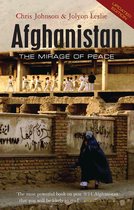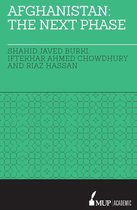Afghanistan in Transition Looking Beyond 2014
Afbeeldingen
Artikel vergelijken
Auteur:
Richard Hogg
Claudia Nassif
- Engels
- Paperback
- 9780821398616
- 30 maart 2013
- 174 pagina's
Samenvatting
The withdrawal of most international troops by 2014 will have a profound and lasting impact on the country's economic and development fabric. This book explores some of these ramifications. Development progress since 2001 has been mixed. The country has recorded some major achievements such as rapid economic growth, relatively low inflation, better public financial management, and gains in basic health and education. Key social indicators, including life expectancy and maternal mortality, have improved markedly, and women are participating more in the economy. Yet in other respects, particularly governance and institution building, the country has fared less well, and many indicators have worsened in recent years. Afghanistan remains one of the world's least developed countries, with a per capita gross domestic product (GDP) of only $528. More than a third of the population live below the poverty line, more than half are vulnerable and at serious risk of falling into poverty, and three-quarters are illiterate. Additionally, political uncertainty and insecurity could undermine Afghanistan's transition and development prospects. The large aid inflows that have benefited Afghanistan have also brought problems. Aid has underpinned much of the progress since 2001-including that in key services, infrastructure, and government administration-but it has also been linked to corruption, poor aid effectiveness, and weakened governance. Aid is estimated to be $15.7 billion-about the same as the size of theGDP in fiscal year 2011. Despite the large volume of aid, most international spending 'on' Afghanistan is not spent 'in' Afghanistan, as it leaves the economy through imports, expatriated profits of contractors, and outward remittances. Other countries' experience shows that the impact of large aid reductions on economic growth may be less than expected. The main issue for the future is how to manage this change, mitigate impacts, and put aid and spending on a more sustainable path. This book is intended for a wide audience interested in the relationship between conflict, aid and development and how international responses to post-conflict state building and reconstruction may both help and hinder a countries transition out of conflict towards a more stable future.
Productspecificaties
Wij vonden geen specificaties voor jouw zoekopdracht '{SEARCH}'.
Inhoud
- Taal
- en
- Bindwijze
- Paperback
- Oorspronkelijke releasedatum
- 30 maart 2013
- Aantal pagina's
- 174
- Illustraties
- Nee
Betrokkenen
- Hoofdauteur
- Richard Hogg
- Tweede Auteur
- Claudia Nassif
- Co Auteur
- William Byrd
- Hoofduitgeverij
- World Bank Publications
Overige kenmerken
- Extra groot lettertype
- Nee
- Product breedte
- 191 mm
- Product hoogte
- 13 mm
- Product lengte
- 260 mm
- Studieboek
- Nee
- Verpakking breedte
- 178 mm
- Verpakking hoogte
- 11 mm
- Verpakking lengte
- 250 mm
- Verpakkingsgewicht
- 426 g
EAN
- EAN
- 9780821398616
Je vindt dit artikel in
- Categorieën
- Taal
- Engels
- Beschikbaarheid
- Leverbaar
- Boek, ebook of luisterboek?
- Boek
- Studieboek of algemeen
- Algemene boeken
Kies gewenste uitvoering
Bindwijze
: Paperback
Prijsinformatie en bestellen
De prijs van dit product is 27 euro en 99 cent.
2 - 3 weken
Verkoop door bol
- Prijs inclusief verzendkosten, verstuurd door bol
- Ophalen bij een bol afhaalpunt mogelijk
- 30 dagen bedenktijd en gratis retourneren
- Dag en nacht klantenservice
Rapporteer dit artikel
Je wilt melding doen van illegale inhoud over dit artikel:
- Ik wil melding doen als klant
- Ik wil melding doen als autoriteit of trusted flagger
- Ik wil melding doen als partner
- Ik wil melding doen als merkhouder
Geen klant, autoriteit, trusted flagger, merkhouder of partner? Gebruik dan onderstaande link om melding te doen.








